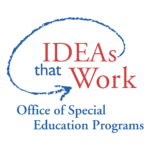The resource directory is searchable and contains articles, tools, recordings, and links to websites. The resources are also categorized by topics, including the five Focus Areas suggested by the California Department of Education. Use the Search box below or click on the topical links to access the resources. (Hint: Once you have done an initial search, you will be able to sort the results by Resource Name or Publication Date.)
The article provides an overview of the issues surrounding racial and ethnic disproportionality in school suspensions. It is useful to practitioners that seek to complicate commonly held ideas about the effectiveness of school discipline practices.
Gregory, A., Skiba, R. J., and Noguera, P. A. “The Achievement Gap and the Discipline Gap: Two Sides of the Same Coin?” Educational Researcher, 39(1), 2010: 59-68.
During her keynote presentation, Dr. Nancy Dome explored what equity can look like in schools when implementation is intentional and relationships are at the core.
Much of the time when we look at data it is through a deficit lens, which allows us to separate ourselves from the outcomes and lay the majority of the responsibility on the individual. However, research has demonstrated the connection between building meaningful relationships and student achievement and reduced student discipline. Thus, like any good implementation, effectiveness and success is a product of intentionality and lots of practice. This means we have to begin to invest our resources and time into supporting staff to build their own awareness of self while concurrently shifting the focus from primarily one of content to one of developing social supports to strengthen relationships with students. Relationships are paramount to provide a foundation of support and purpose.
Dr. Dome spoke at the Equity Symposium presented by the State Performance Plan Technical Assistance Project that was funded by the California Department of Education, Special Education Division, and co-hosted by Student Involvement and the Chicano and Latino Studies departments at Sonoma State University. The Equity Symposium was held October 18, 2018.
Dome, Nancy. 2018. The Connection between Disproportionality and Relationships. State Performance Plan Technical Assistance Project.
The article examines how the local contexts of school districts affect teacher’s perceptions of special education and students. The article is useful to practitioners because it gives insight into how teacher’s perceptions may be related to disproportionate outcomes.
Skiba, R.J., Simmons A., and others. “The Context of Minority Disproportionality: Practitioner Perspectives on Special Education Referral”. Teachers College Record. Volume 108, No. 7, 2006: 1424-1459.
Providing an essential counternarrative for white teachers in urban settings, the authors draw on historical belief systems and current events to reinforce the importance of their work and give strategies for improvement.
Moore, Eddie. 2018. The Guide for White Women Who Teach Black Boys. Thousand Oaks, CA: Corwin
A national, federally funded center that provides high-quality resources for college and university faculty and professional development providers about students with disabilities; also provides free, online, interactive training enhancements that translate research about the education of students with disabilities into practice, including training modules, briefs, and materials on diversity, differentiated instruction, progress monitoring, collaboration, behavior, MTSS and more.
The Ongoing Journey of Racial Equity Work: A District Story was presented by Dr. Ammar Saheli on Wednesday, November 9, 2016. This webinar is presented to you via the State Performance Plan Technical Assistance Project (SPPTAP) and the Napa County Office of Education with funding from the California Department of Education.
Note: Images referenced at the end of the webinar can be viewed from the Webinar PowerPoints link below.
Equity Implementation Module San Lorenzo USD: https://www.dropbox.com/s/1juzo0vcjeha56r/Equity_Implementation_Model_SLZUSD.pdf?dl=0
Webinar Resources San Lorenzo USD: https://www.dropbox.com/s/6vdy8a9h62jk9rf/Webinar_SLZUSD_Resources.docx?dl=0
Webinar PowerPoints: https://www.dropbox.com/s/ju4qdzmkwcydgji/SPPTAP%20Webinar%20SLZUSD_FINAL_HO.pdf?dl=0
Saheli, Ammar. 2016. The Ongoing Journey of Racial Equity Work: A District Story. State Performance Plan Technical Assistance Project.
In reviewing restorative justice practices to determine if they have an effect on inequitable discipline, the authors used quantitative data from over 400 students in 29 schools. They determined that teachers who use restorative practices with fidelity do contribute to a reduction in the equity gap.
Gregory, Anne, Clawson, Kathleen, Davis, Alycia, and Gerewitz, Jennifer. 2016. “The Promise of Restorative Practices to Transform Teacher-Student Relationships and Achieve Equity in School Discipline.” Journal of Educational and Psychological Consultation 24, no. 4: 325-353.
Using middle school survey data, the authors of this paper determined that the self-described school experience of Black and Latino students in California is not where educators would like it to be. As compared with White students, Black and Latino youth have less positive feelings of safety, connectedness, and opportunity. Within the context of school climate, such results indicate a need for individual and systems-wide change.
Voight, Adam, Hanson, Thomas, O’Malley, Meagan, Adekanye, Latifah. 2015. “The Racial School Climate Gap: Within-School Disparities in Students’ Experiences of Safety, Support, and Connectedness.” American Journal of Community Psychology. 56 (3-4): 252-267.
In this article, Ford brings forward a frequently identified root cause of inequity in society and in school discipline, implicit bias. He acknowledges that all people, including educators, are raised in context of social situations and conditioning. Ford refers to methods for raising the issue of implicit bias with teachers, guiding them to introspection and leading them toward individual and systematic change.
Ford, James E. 2016. “The Root of Discipline Disparities.” Educational Leadership. 3:42-46.
Reinforcing the commonly held scholarly perspective that inequitable school discipline practices are not the result of poverty or higher rates or intensity of behaviors, the authors of this article review root causes of inequity and the complex changes required for remediation.
Welsh, Richard O., and Little, Shafiqua. 2018. “The School Discipline Dilemma: A Comprehensive Review of Disparities and Alternative Approaches.” Review of Educational Research 88 (5): 752-794.


